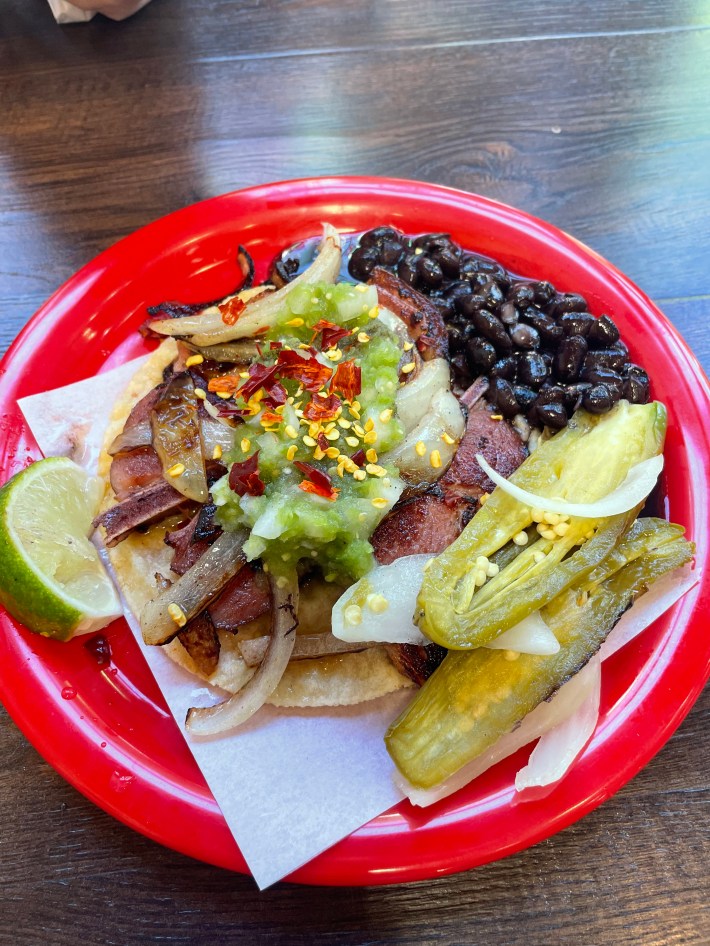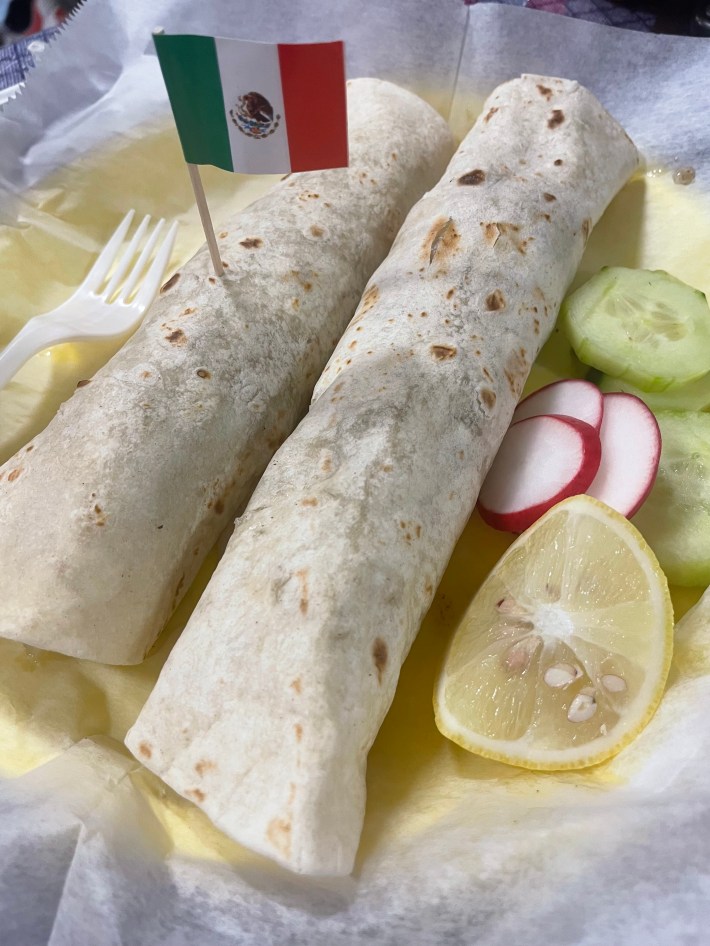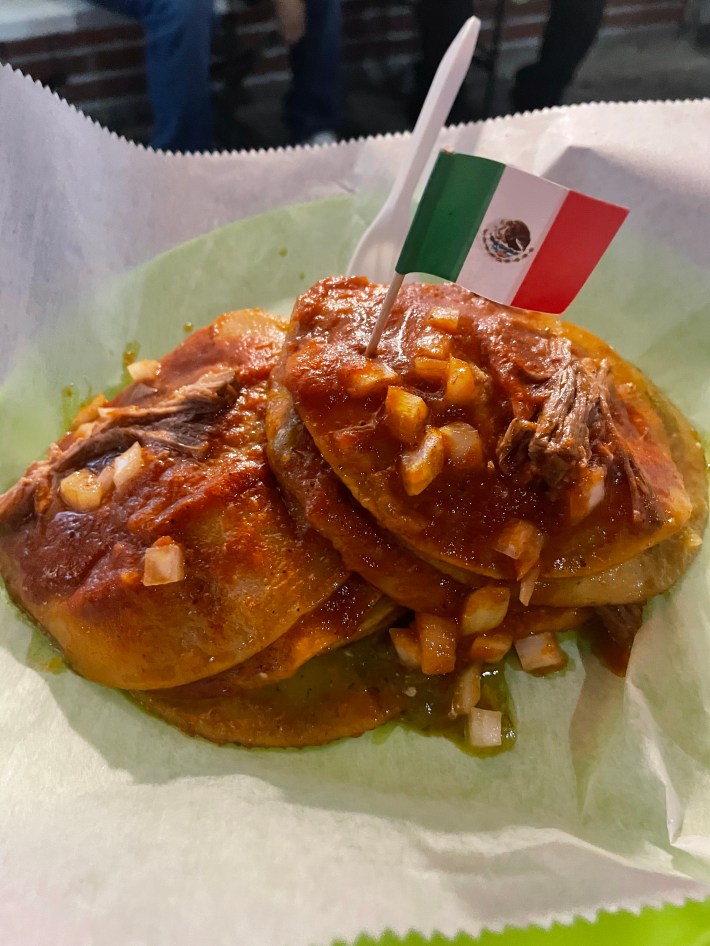FLUSHING — “Seventy-five years of breaking barriers” is the official slogan of this year’s U.S/ Open, but for anyone who’s spent time out at the USTA Billie Jean King National Tennis Center, it can often feel like the tournament is more adept at putting barriers up than taking them down. For two weeks around Labor Day, fans from all over the world stream to and from the tennis center’s two main entrances in a dull stampede. Entering the complex from the subway station to its north, there’s a maze of security barriers to negotiate; arriving at the Open from the ride share dropoff/pickup zone to the center’s west requires slaloming around an obstacle course of tinted-window cop cars, mobile floodlights, and foot-thick pre-cast concrete traffic barriers branded with “NYPD” in dark blue paint. Fair enough, you might think: the U.S. Open is one of the most popular sporting events in New York City, and it calls for a meaty surveillance and security operation. But the closer you look at the center and the areas around it, the more it seems obvious that the barriers are there not to keep fans at the tournament safe, but to make sure the ordinary New Yorkers enjoying themselves just beyond the tennis center’s perimeter stay well away from the action.
Given the cultural heft of the U.S. Open, a measure of contrast between the glitz of the tennis center itself—the Honey Deuces, the champagne goblets, the boxes groaning with Hollywood elites, not to mention the exorbitant cost of tickets to get inside—and the working-class areas of New York immediately surrounding it is probably inevitable. But the size of the gulf is genuinely startling. It starts with the infrastructure that serves the center itself: the pedestrian bridge that leads from the Mets-Willets Point subway station to the Open’s main entrance is a rickety piano of loose wooden planks held down, in its most degraded sections, with makeshift squares of plywood, which offers anyone walking over it the strange sensation of being at sea while standing about half a mile inland from Flushing Bay. The paths leading to the Champions’ Entry, as the southern entrance is known, are potholed and prone to flooding, while clouds of dust linger over the fields nearby for the duration of the Open from the cars that take over the adjoining park.
The tennis center nominally belongs to that park—Flushing Meadows-Corona Park, New York’s fourth largest. But in practice the power relationship is inverted, and the park’s public greens and playing fields, crowded on weekends with throngs of locals, many of them Hispanic, enjoying themselves over grilled meats and games of volleyball and soccer, virtually cower under the bulk of Arthur Ashe Stadium and its satellites. The park was built for the 1939 World’s Fair and upgraded when New York hosted the fair again in 1964. The high-flown spirit of those origins can still be seen in the few remaining structures of the 1964 fair, with their swooping outlines and Jet Age bombast, and in the heraldic names given to the park’s main arteries: Avenue of Progress, Promenade of Industry, Astronaut Crescent. Today, however energetic and happy the groups that still flock to its tattered lawns might be, Flushing Meadows-Corona Park stands instead as a kind of monument to the failed idealism of the 20th century, overflowing with trash, its symbolic fountains drained of water, its signposts dated and barely legible, its walkways cracked and carbuncular. It can still be a pleasant place to spend a summer afternoon, but it’s perennially underfunded and underappreciated, while the sporting behemoth on its northern edge continues to rack up record revenues.
Despairingly little of U.S. tennis’s growing windfalls trickles out into the world immediately beyond its prize property. The USTA, which leases the grounds of the tennis center from the New York City parks department, has long had a strange relationship with the green space that hosts it, with the city often oscillating between threats and suasion in its bid to get the tennis body to contribute more to the adjoining amenities. None of it seems to matter: Under the terms of its lease, the tennis center contributes 1 percent of its annual income—which reached a record $560 million last year, the vast bulk of it earned from hosting the U.S. Open—to the city, but not a cent of that sum is mandated to go directly to the neighborhoods adjoining the home of the Open. In 2013, the USTA reportedly promised $10.05 million to Flushing Meadows-Corona Park, but whether that money materialized—and the ends to which it was put—remain unclear. It’s not like the tennis authority can’t spare the nickels: in May it announced that it will spend $800 million to overhaul the National Tennis Center over the coming two years, the centerpiece of which will be a Dubai-like “Grand Entrance” (please respect the capital letters) designed by starchitect Daniel Libeskind. All the evidence suggests that the USTA is happy to lower the curtain on its performance of civic virtue once it makes its annual contractual disbursement to the city; as a non-profit, it can always shield itself from accusations of social insensitivity by pointing to its long history of reinvesting its now-vast profits—in 2024, the US Open operated at a stupendous margin of 49 percent—into the development of tennis at a national level.
In recent years there’s been a move to beef up “fan week”—the week of practice and qualification matches immediately preceding the Open, which this year included the thrill of an accelerated mixed-doubles competition—as a way to open the tournament up to the plebs. But these are crumbs in place of a full meal, and they do nothing to conceal the fundamentally dismissive attitude the USTA takes toward its host location, as a place to be used and driven over (often literally, given the vast park acreage that’s converted into a VIP parking lot for the duration of the Open) for its own financial gain. The tennis center does not exist to lift up the surrounding communities but to lord over them. If any locals can afford the $200-300 cost of a grounds pass to take in the action during the Open’s first week, they’re welcome in; if they can’t, they should stay well away from the tennis-industrial compound and the fat-pocketed patrons who keep American tennis flush with cash.
None of this should come as a huge shock: in today’s hyper-financialized sporting economy, even non-profits like the USTA are run according to the iron law of profit maximization, which naturally means cutting costs and community largesse to the bone. What’s more surprising is how little interaction there is—how little traffic, how little exploration—between the U.S. Open’s home and the areas around it. The relationship between the Billie Jean King National Tennis Center and the working-class neighborhoods of Flushing and Corona that sit either side of the park is built, from what I’ve observed over the past two weeks in and around the Open, on mutual indifference.
The National Tennis Center on a packed day of action at the U.S. Open is a truly bewildering place to be: teeming, hectic, exclusive, giddy, and somehow greedy all at once—like a queue for the buffet at some vast open-air business class lounge. The tennis is mesmerizing, the sight lines are impeccable, the food is mediocre. Most captivating of all is the crowd, a strangely accessible mix of famous players ambling to and from the practice courts, celebrities, wealthy white retirees, glammed-up night session goers, preppy tennis bros prowling the grounds holding sticky towers of empty Honey Deuce cups, food influencers grid-posting their epiphanic sampling of Coqodaq’s $100 chicken nugget and caviar box, zoned out parents sipping espresso martinis at the picnic tables while their kids pick the eyes out of chicken gyros from King Souvlaki, professional visor wearers bulldozing toward their third-round appointment on Grandstand with Linda Nosková and Karolína Muchová, PR reps pecking at laptops by the Dove deodorant activation, droopy Boomers getting their complimentary skin check courtesy of La Roche-Posay, and dewy Zoomers cooling off under the Big Fogg misting fans before queuing at the Fage stand for miniature tubs of complimentary fruit yogurt.
But once the on-court action ends, where does this college campus of humanity go? It dissolves almost instantly into the night, disappearing through the gates of the New York City subway system or the pleather jaws of the waiting Uber XLs. Sure, you’ll sometimes see groups of tennis goers enjoying pre-Open lunch or post-Open dinner at Park Side Restaurant, the Italian-American red-sauce stalwart a few blocks west of the tennis center; very occasionally you might see a Deuce cup-holding risk taker push deeper into Corona in search of post-match refreshment. But these are the exception rather than the rule. Roosevelt Avenue, the “corridor of vice” that’s also among the city’s most intoxicating zones of culinary possibility, remains unexplored by the vast bulk of the U.S. Open’s attendees.
This means most visitors experiencing New York through the Open miss out on the full glory of a night out in Corona, where the “sports” bars keep their smoke machines running until dawn, conversation always takes a back seat to music, and the food carts and take-out windows dish up lard-spiked chalupas, thrillingly oily encebollados de pescado, Califa de León-style tacos, and the best tacos arabes in the city with the relentless excellence of a Djokovic return well into the morning hours. Not that anyone seems to care that tennis fans are skipping the real party: the locals appear as indifferent to the Open as the Open is to them. On nights I’ve spent around Corona over the past two weeks, even during the thick of “primetime at the U.S. Open, presented by IBM,” the TVs in the bars have usually been set to whatever MLS or Liga MX match happens to be on rather than the tennis. The strange thing is that at the Open’s zenith, the tennis center somehow mimics the sweaty density of Corona’s streets, albeit at a much higher income bracket. There is much more that unites these two areas of northern Queens than their reciprocal estrangement suggests.



It would be tempting to call the tennis center an island, a world removed from the streets surrounding it. But alongside Etihad Park rising rapidly to its north and Citi Field, just across the tracks of the 7 train that run the length of Roosevelt Avenue, it’s more like the southern point of an emerging archipelago. There are still a few holdouts in Willets Point’s old Iron Triangle, the watery, potholed, magnificent mess of body shops and touch-up garages that has long functioned as the emergency clinic-cum-mortuary of New York car culture. But as Etihad Park takes shape, the giant billboards over Citi Field beam out ads for Montauk Surf Beer and “the official ETF of the New York Mets,” and the National Tennis Center keeps racking up record profits, whatever auto shops remain on the point seem not long for this world. The old spare-parts economy that used to define these neighborhoods has been replaced by something far more high-end and bespoke, with tennis, baseball, concerts, and (soon) soccer put on by swimmingly rich owner-investors for the entertainment of the Uber-in Uber-out crowd. The Iron Triangle is giving way to the Golden Triangle, a trio of stadiums that are all in the city but somehow not of it, thrust into higher altitudes from their host borough thanks to bottomless beds of money. In this Angkor Wat of the modern American sporting experience, the tickets are overpriced, fans are overstimulated, and the neighborhoods immediately adjacent remain curiously underloved, disconnected from the arenas that have brought fresh polish to a once-dusty corner of Queens.
Maybe that’s just the way things go today; maybe these two worlds—professional sporting spectacle and everyday working-class life, once so crucial to each other’s flourishing—are now divorced for good, destined to evolve apart. But it seems like sports fans and the people living in the communities that cushion the big bowls should both want something better than a future built on private luxury, public poverty, and two-way ignorance. Life as a tennis lover, if nothing else, should be about more than meeting up by the Dove activation for $24 Deuces and free deodorant.